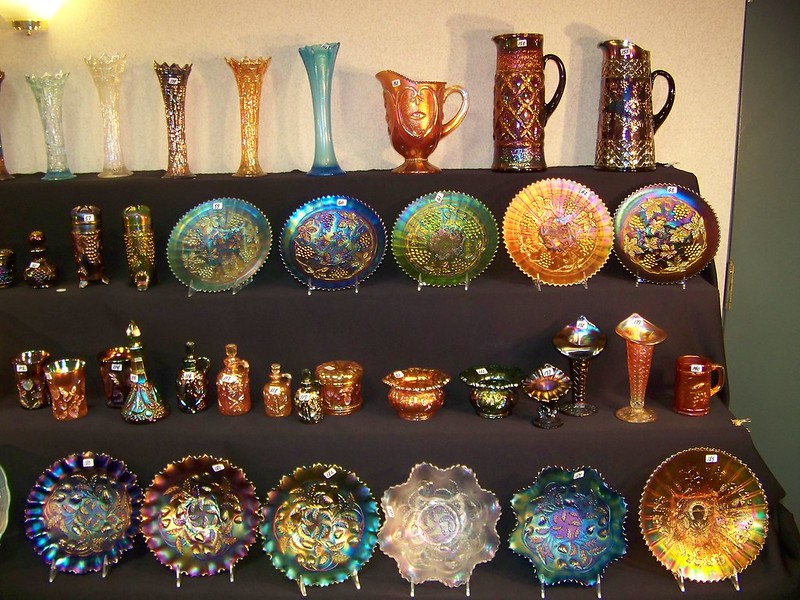
There are as many different ways to collect glass, as there are glass collectors. Some people collect by color, others by pattern, still others by company or style period.
Some folks have very refined collections that only include a specific article –like covered candy jars or shot glasses - and lots of people collect single cup & saucer sets. Then of course, there are those collectors who buy everything and anything they see because they love it all and can’t decide…. Remember: there are no hard and fast rules in assembling your collection. Buy what you like and enjoy your glass.
Following, is a list and brief description of some of the more common categories of glass to help you on your collecting journey. It is by no means complete - we’re only whetting your appetite - but is meant to highlight some of the more popular types of glass and styles of glass collecting. As you read through it, you may discover that your budding collection has already fallen into a specific genre, and we’d like to take this opportunity to recommend that your next glass purchase should be a book. There are wonderful books available on each of these subjects: most include a history of the glass’ production, lists of pieces available in each pattern, a general price guide, and rare items to watch for. For many collectors, the thrill of identifying something that they just purchased rivals that of the hunt.

Art Glass - is hand made glass that was produced from the late 1800’s through the 1950’s. This type of glass was hand worked, so no two pieces will be exactly the same. Tiffany, Steuben, Loetz, D’Argental, and Durand are just a few of the companies who produced art glass.


